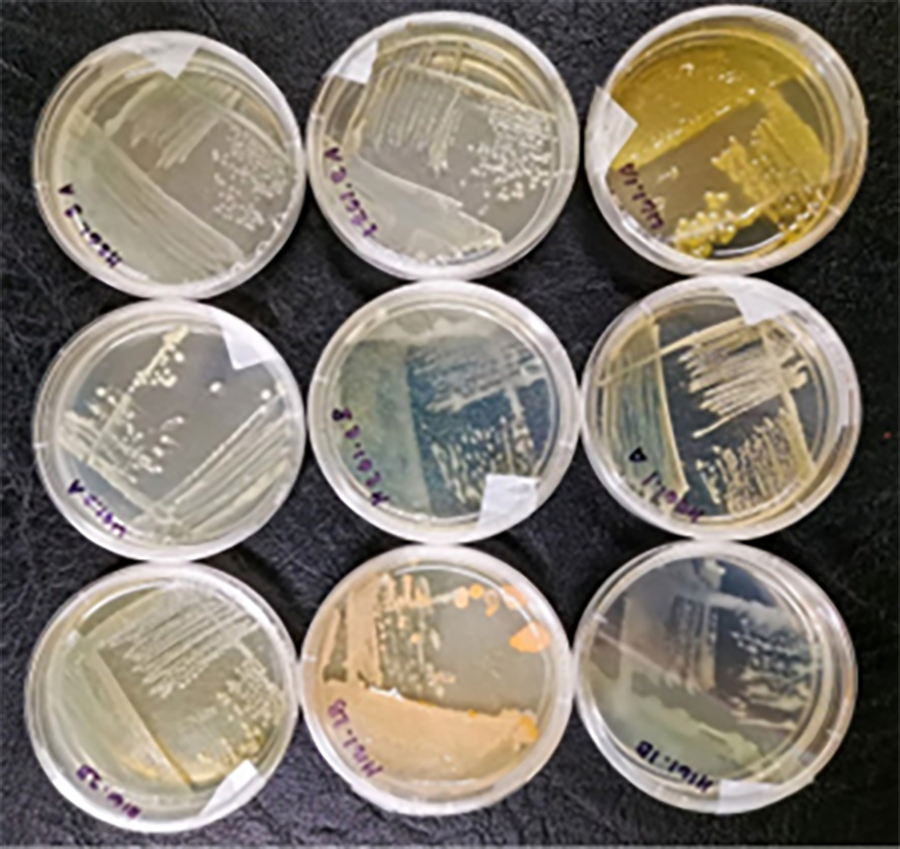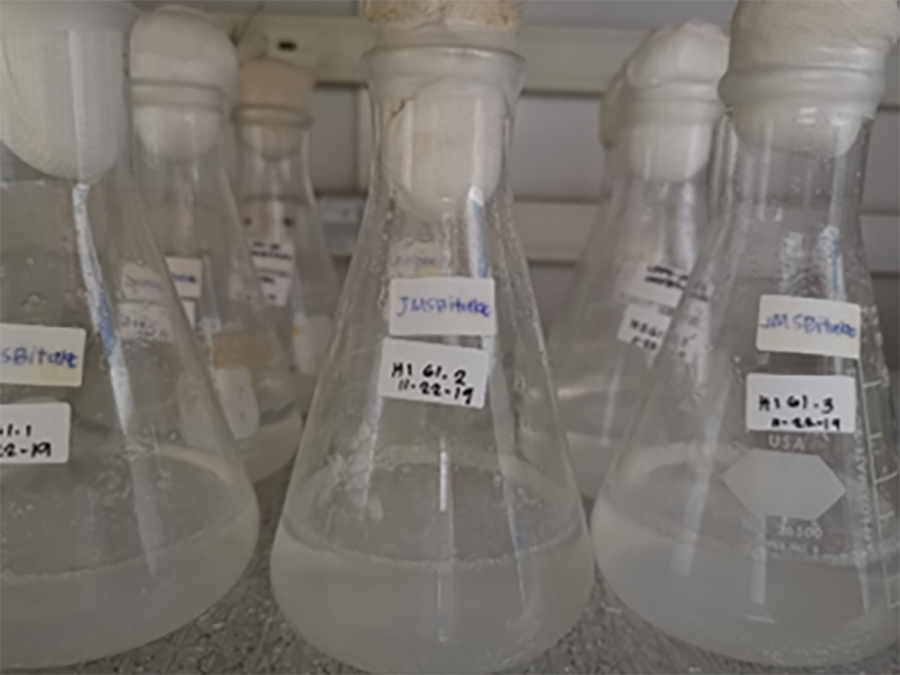Attachment of potential cultivable primo-colonizing bacteria and its implications on the fate of low-density polyethylene (LDPE) plastics in the marine environment
Summary
Mismanaged plastic wastes resist decomposition and accumulate in the environment. Plastic-polluted environments provide opportunities for naturally-occurring marine microorganisms to associate with marine plastic debris. Initial bacterial colonizers of plastic, called ‘primo-colonizers’, possess functional capabilities that enable them to survive on the plastic surface. To demonstrate these surface-associated activities and their effect on the plastic, cultivable sediment bacteria from areas of Manila Bay with plastics accumulation were isolated to detect their activity on the low-density polyethylene (LDPE) surface. Microscopic analyses showed substantial growth of cells, formation of cell-shaped holes, and increased roughness of the surface. Spectroscopic analysis revealed changes in the chemical structure of the plastic, suggesting that the bacteria may have interacted with the plastic backbone. This study demonstrated LDPE biodeterioration and bio-fragmentation as an outcome of attachment by primo-colonizers. Understanding the activity of primo-colonizing bacteria on the plastic surface can provide insights on the possible mechanisms used to make plastic more habitable for other species, and their implications on the fate of plastics in the marine environment.
Significance
Persistence, accumulation, and toxicity of plastic waste call for developing efficient and ecologically sound strategies that would accelerate their degradation. Plastic accumulation in the marine environment could have enriched microbial taxa with adaptive responses to this pollution, and identification of these plastic-associated taxa allows for potential bioremediation strategies towards recalcitrant plastic pollutants in the marine environment. Manila Bay in the Philippines is suggested to be one of the most significant contributors of plastics that leak into the marine environment. While the bay is known for its high accumulation of plastics, bacterial communities and their responses to this type of environment are not yet fully explored and characterized. This study presented how each bacterial species have altered the surface structures of LDPE and discussed the implications of initial bacterial attachment on the fate of plastic.
This study provided evidence for primo-colonizing activities that are directly observed in vitro, which offers novelty on the frame of discussion for bacterial colonization of plastic and its consequences on the plastic structure, with regards to existing literature that only infer functional capabilities through molecular data, or present culture-based evidence for biodegradation as end points of plastics-bacteria interactions. It is significant to discuss the fate of environmental pollutants in an ecological perspective in order to fully elucidate the biological processes that could either affect their removal, or contribute to production of by-products that present additional risks to public health and the environment.
Photos


Authors:
Justine Marey S. Bitalac (Marine Science Institute, University of the Philippines; Microbiology Division, Institute of Biological Sciences, College of Arts and Sciences, University of the Philippines Los Baños)
Nacita B. Lantican (Microbiology Division, Institute of Biological Sciences, College of Arts and Sciences, University of the Philippines Los Baños)
Deo Florence L. Onda (Marine Science Institute, University of the Philippines)
Read the full article: https://doi.org/10.1016/j.jhazmat.2023.131124
